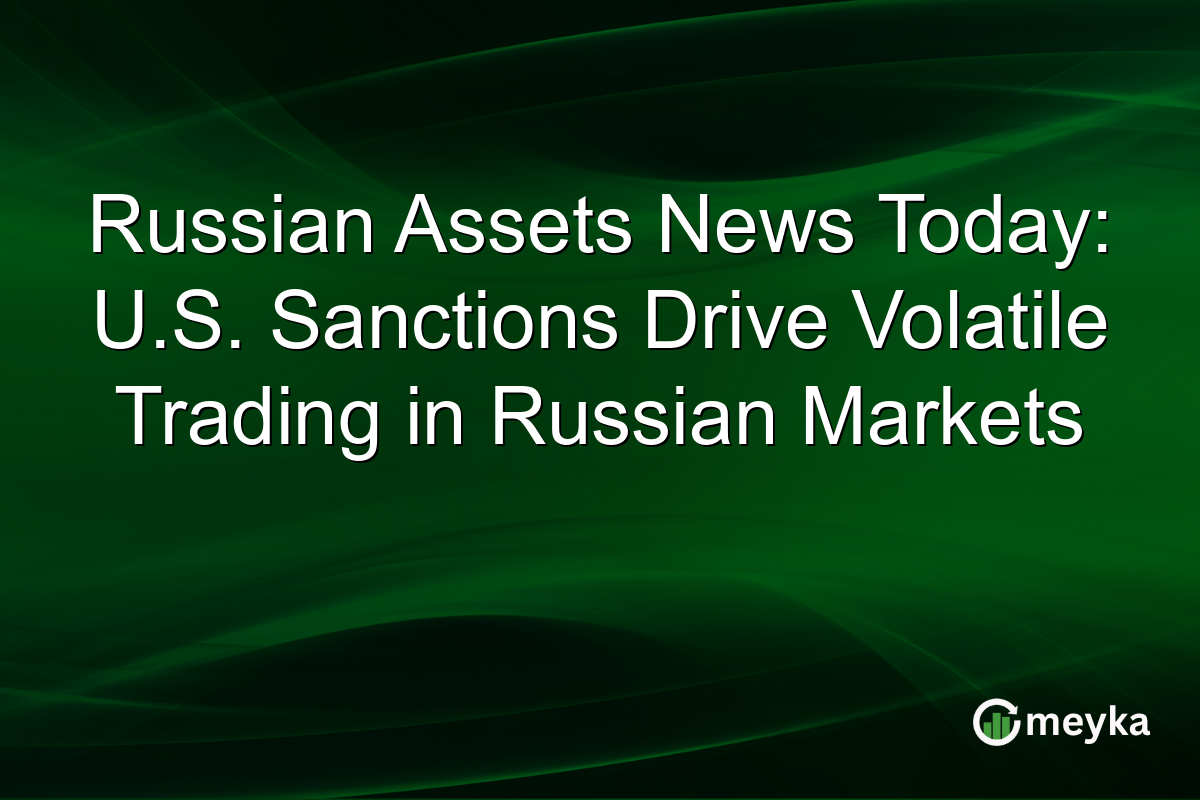Russian Assets News Today: U.S. Sanctions Drive Volatile Trading in Russian Markets
Today’s financial world is laser-focused on Russian assets as new U.S. sanctions hit the market. These sanctions aim at Russian oligarchs and companies, driving volatility and investor uncertainty. As the ruble wavers and stock markets react, global investors face critical decisions about risk and compliance.
Impact of U.S. Sanctions on Russian Assets
Sanctions are creating seismic shifts in how Russian assets perform. Recently, the U.S. imposed stricter measures targeting key sectors and individuals linked to the Russian government. These sanctions immediately affected stocks and financial instruments related to Russia. Volatility has surged, with traders scrambling to adapt to rapid market changes. According to a recent article on Reuters, these sanctions are more comprehensive than previous rounds, affecting a wider range of companies. This has caused the Russian stock market to experience sharp fluctuations, impacting both local and international investors.
Russian Stock Market Impact
The Russian stock market is under intense pressure with these new sanctions. Companies are witnessing significant stock price swings as investors reevaluate their positions. Sanctions on companies are particularly impactful as they restrict global transactions. One investor on X, discussing the current impact, highlighted that, “This shows how sanctions can reshape the financial landscape overnight.” The sanctions not only lead to asset freezes but also increase compliance requirements, further complicating investment decisions.
Russian Ruble Volatility
The Russian ruble has shown noticeable volatility following the announcement of the sanctions. Currency markets are sensitive to geopolitical events, and the ruble has dropped against major currencies. This drop reflects investor wariness about Russia’s economic outlook. According to Bloomberg, the ruble’s instability is linked to fears about prolonged economic isolation. As sanctions tighten, currency traders anticipate further fluctuations, which could affect global commodity prices, given Russia’s role in energy markets.
Sanctions Compliance Challenges
Alongside asset freezes, sanctions compliance presents significant challenges. Companies with Russian exposure must navigate complex regulations to avoid penalties. This is particularly true for multinational corporations and financial institutions with Russian operations or partnerships. A report from CNBC explains that compliance costs are rising, pushing businesses to reassess their dealings with Russian counterparts. This has led to a reassessment of risk management strategies across the board.
Final Thoughts
The impact of U.S. sanctions on Russian assets is profound, with widespread market volatility and compliance challenges. Investors are forced to quickly adapt to rapid changes, underscored by stock market and currency fluctuations. Understanding this complex landscape is crucial for informed investment decisions. As the geopolitical situation develops, staying updated on regulatory shifts will be essential for navigating future risks.
FAQs
U.S. sanctions restrict transactions and freeze assets, leading to stock market volatility. Russian companies, particularly those targeted by sanctions, experience sharp share price fluctuations, impacting investor strategies globally.
The ruble’s volatility stems from investor concerns about sanctions’ economic impact. As sanctions tighten, the ruble reacts to potential isolation and economic slowdown, affecting its value against other major currencies.
Sanctions compliance involves navigating complex regulations to avoid hefty penalties. Companies must manage increased compliance costs and reassess their exposure to sanctioned entities to mitigate financial risks.
Disclaimer:
This is for information only, not financial advice. Always do your research.






